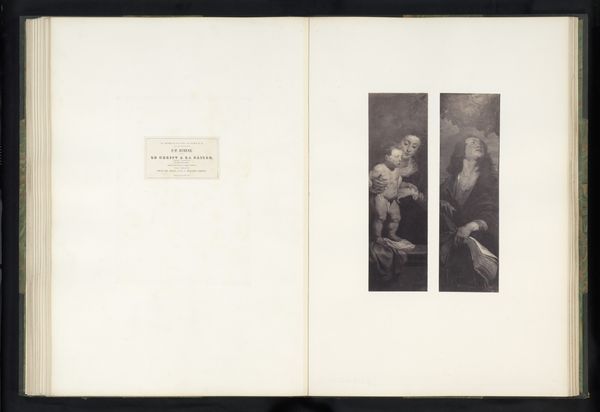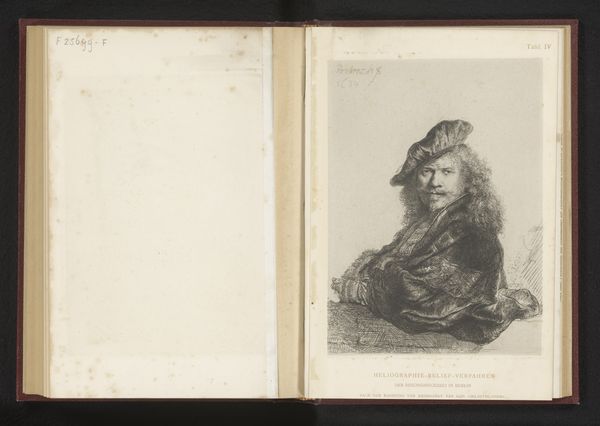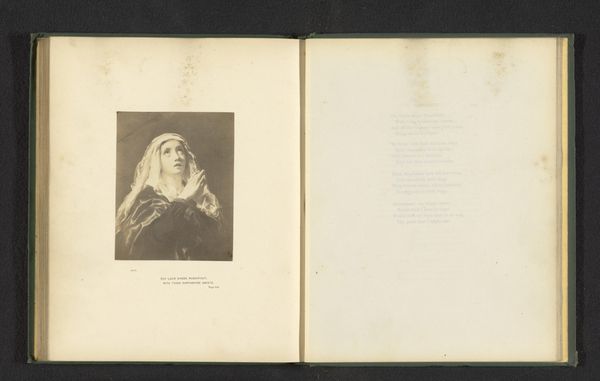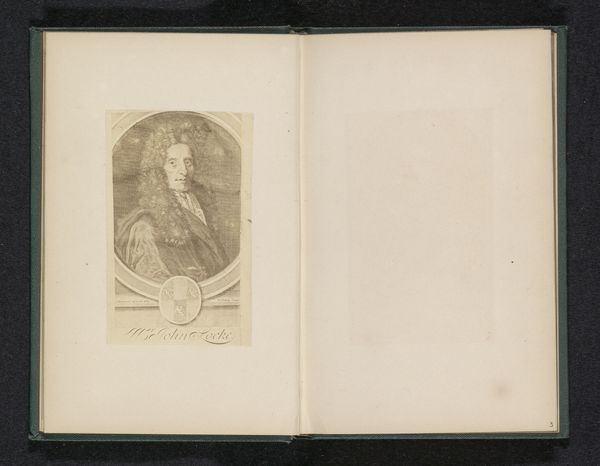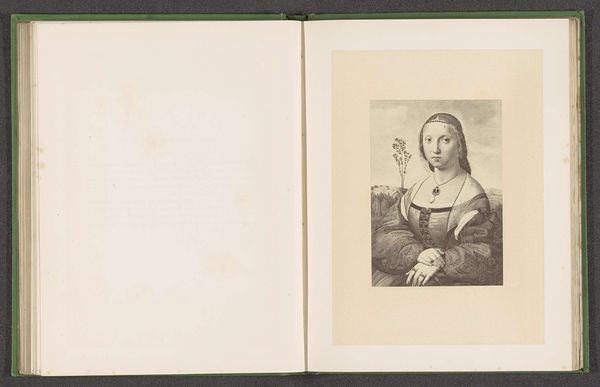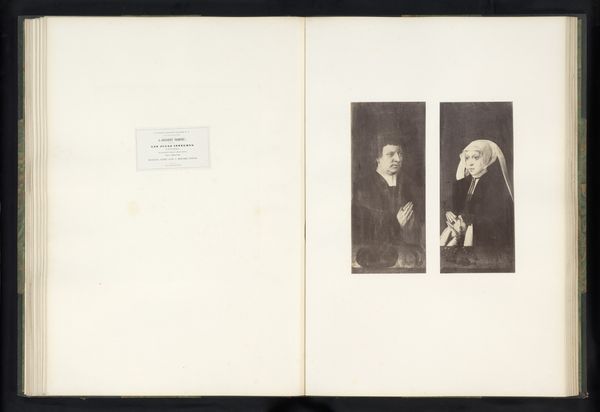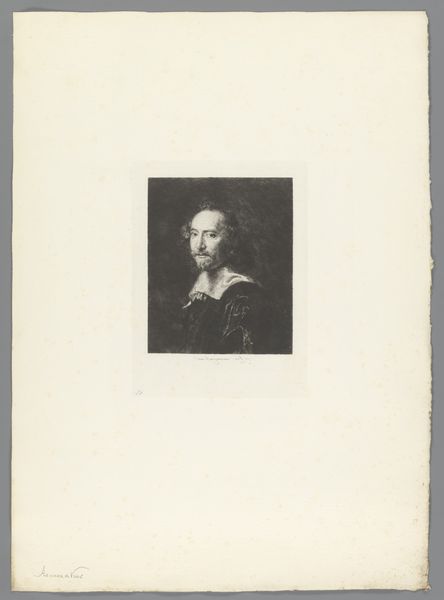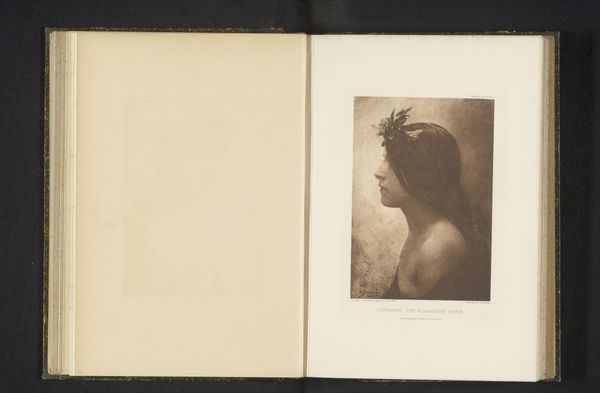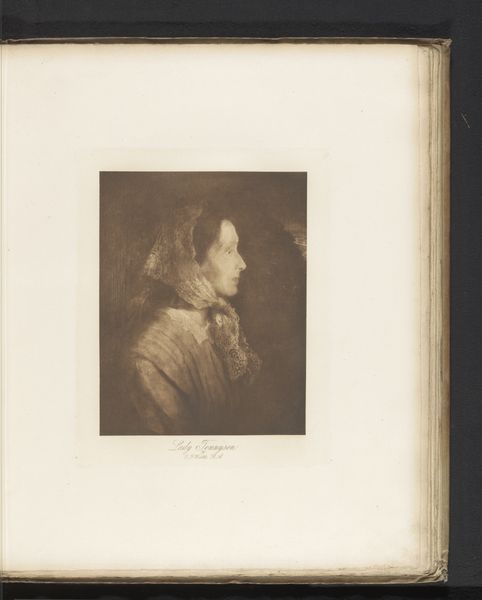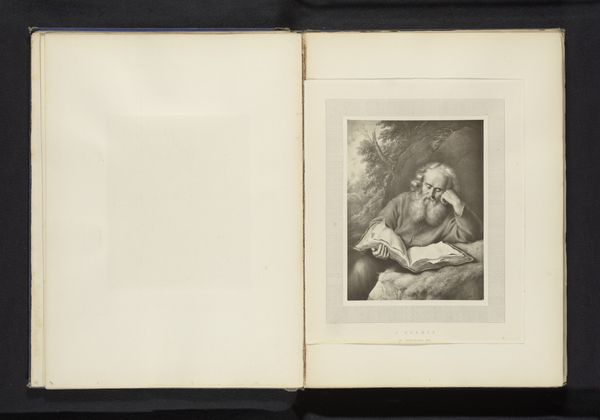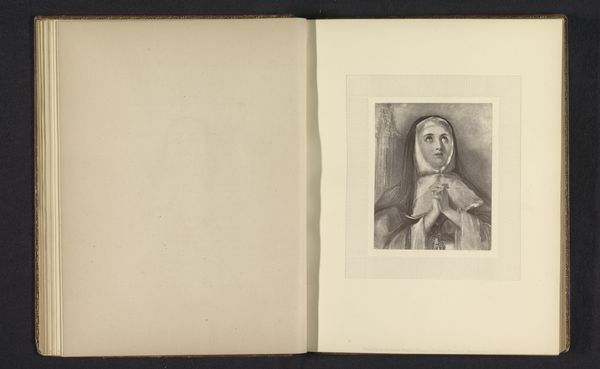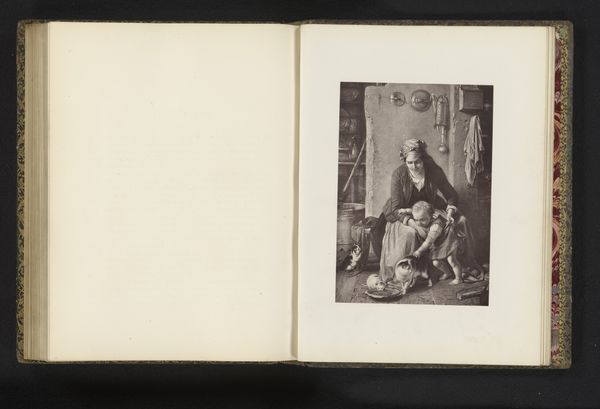
print, photography, gelatin-silver-print
#
portrait
# print
#
11_renaissance
#
photography
#
gelatin-silver-print
Dimensions: height 371 mm, width 272 mm
Copyright: Rijks Museum: Open Domain
Editor: This is a photographic reproduction, taken before 1861, of Quinten Massys's painting, "Mary in Prayer." The gelatin-silver print gives it such a soft, almost ethereal quality. What stands out to you about this particular image? Curator: The act of reproducing itself becomes a fascinating echo, doesn't it? We have Massys, painting in the Renaissance, trying to capture something of the divine through Mary. Then, Fierlants, the photographer, using a new medium to document and disseminate that original vision. It’s image referencing image. Editor: That's interesting. I hadn’t thought about the layering of representation like that. Curator: And consider what remains constant through these layers – Mary’s pose, for instance. Hands clasped, head bowed, eyes averted… these are established iconographic symbols of humility, devotion, and receptivity. She’s an archetype, a vessel. How do those symbols make you feel, especially when viewed through the filter of an early photograph? Editor: The photograph adds this strange sense of distance, even though it’s supposedly capturing reality. Maybe because of the slightly blurred edges? I almost feel like I’m intruding on a private moment, rather than witnessing a declaration of faith. Curator: Precisely! The soft focus and sepia tones of the photograph alter the mood entirely, changing a clear statement into something more ambiguous, open to interpretation. Think about how light and shadow are deployed. Does it reinforce or challenge the original painter's intent? Editor: I think it challenges it. It feels less like reverence and more like… nostalgia? Almost like a memory fading. Curator: A cultural memory, perhaps. The power of photography lies not just in documentation, but in its ability to transform cultural artifacts into new emotional landscapes. Each new viewing reinterprets cultural symbols in the present. Editor: So we’re not just seeing Mary, but also seeing how different eras have chosen to represent her, and what that says about them – and about us, today. Thank you! Curator: Indeed. The image, layered through time and technique, resonates with meanings beyond the immediately visible. A rewarding thought.
Comments
No comments
Be the first to comment and join the conversation on the ultimate creative platform.
